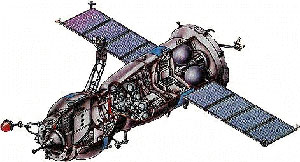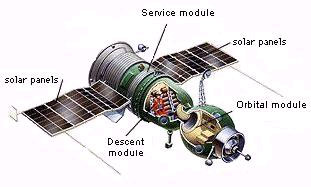Indian cosmonaut to take off for space in 2013
10 Dec 2008
New Delhi: An Indian cosmonaut will once again be part of a space mission onboard a Russian spacecraft. To take place by 2013, the mission will come nearly three decades after Wing Commander Rakesh Sharma undertook a historic flight to the Soviet Salyut 7 space station on 2 April 1984.
Wing Commander Sharma remained on board the space station for eight days.
 This mission, tentatively scheduled for 2013, will precede a planned Indian manned spaceflight in 2015.
This mission, tentatively scheduled for 2013, will precede a planned Indian manned spaceflight in 2015.
India and Russia signed a memorandum of understanding on joint activities in the field of human spaceflight programme during the recent visit of Russian president Dmitry Medvedev.
"As per the agreement, an Indian astronaut will first go on a space mission on a Russian spacecraft. This will be followed by an Indian manned mission to space in 2015," Indian Space Research Organisation's (ISRO) chairman G Madhavan Nair said.
Under the MoU signed by Nair and his Russian counterpart Anatoly Perminov, ISRO and Russian space agency Roskosmos will jointly build the spacecraft for the Indian manned mission.
"We will be redesigning the Soyuz space capsule of the Russian agency for our mission," Nair said.
The Soyuz remains the world's most reliable space vehicle, though there have been unexplained very high G reentries to earth recently, with American crew on board. ISRO would appear to have made a wise choice in opting for a redesign of the Soyuz.
ISRO has already been sanctioned Rs95 crore to study all aspects of the manned space mission, which will involve a two-member Indian crew spending a week in space. The spacecraft, to be placed in a low earth orbit, will splashdown in the Indian Ocean after completion of the mission.
ISRO has already announced the setting up of an astronaut training centre in Bangalore. It has now said that a batch of 200 would be initially selected before four are finally shortlisted, Of these two would go on the mission.
The Soyuz TM
 The Soyuz TM ("Soyuz" means "Union") is a modernized version of the Soyuz T with new docking and rendezvous, radio communications, emergency, and integrated parachute/landing engine systems. It has a more durable metal body and lighter heat shield material.
The Soyuz TM ("Soyuz" means "Union") is a modernized version of the Soyuz T with new docking and rendezvous, radio communications, emergency, and integrated parachute/landing engine systems. It has a more durable metal body and lighter heat shield material.
The Soyuz TM serves as both a ferry for Russian crews coming to and from the station as well as a "lifeboat" for any emergency escapes. The Soyuz can carry three people and has been in use since 1967. Though an old vehicle it has been updated several times.
It was used to ferry people up and down from the Russian space station Mir and now brings people and supplies to the International Space Station.






























